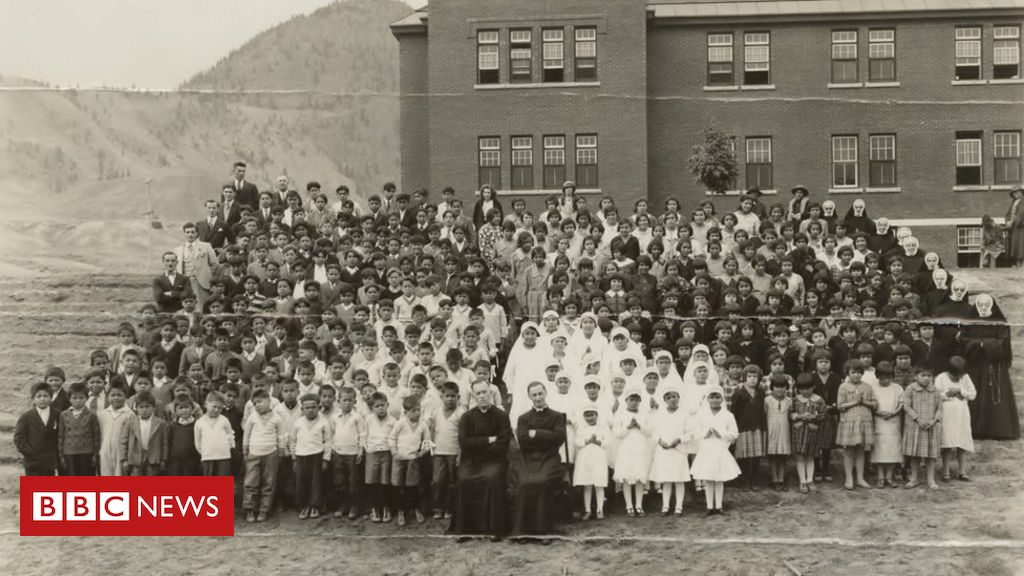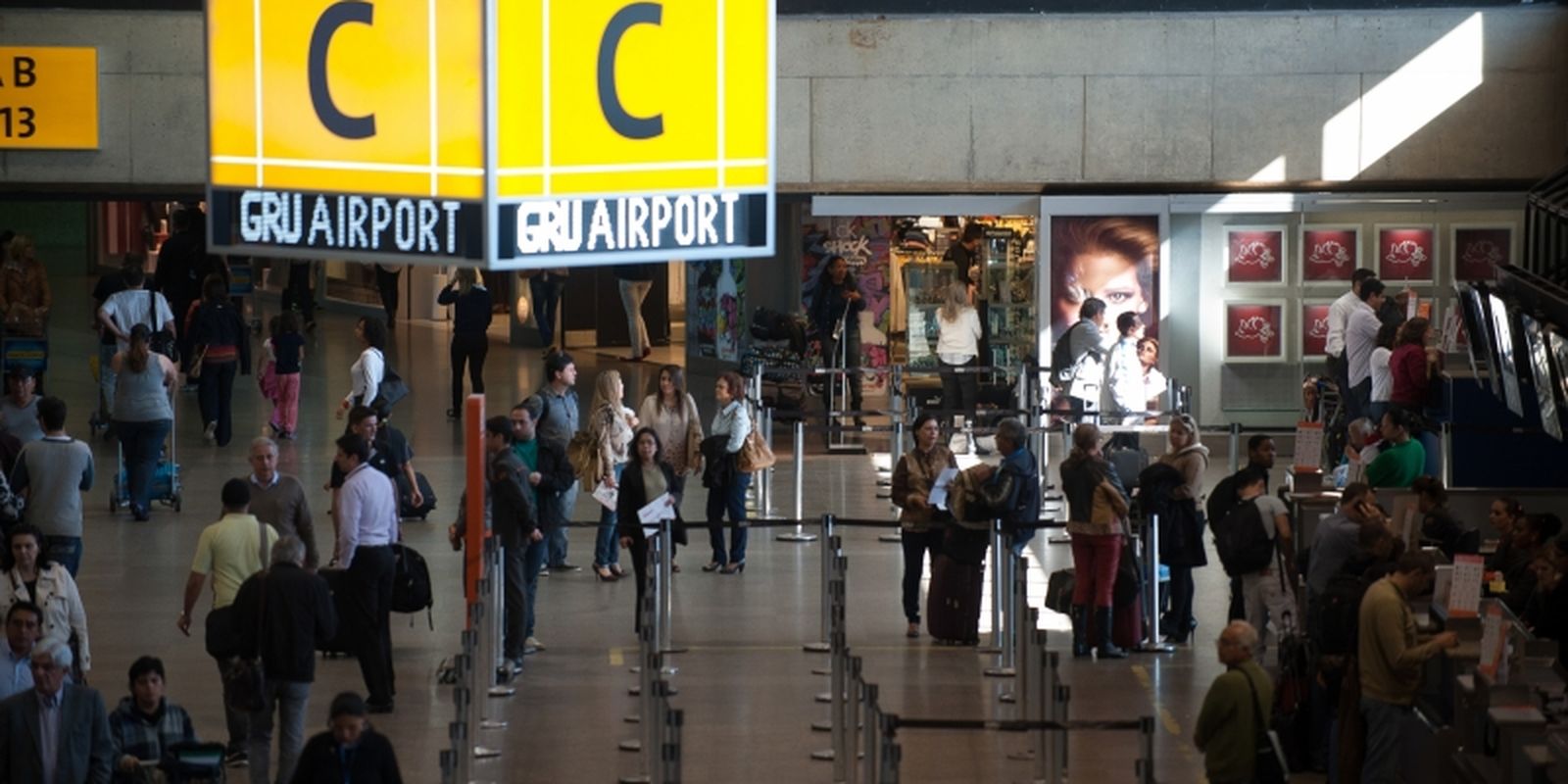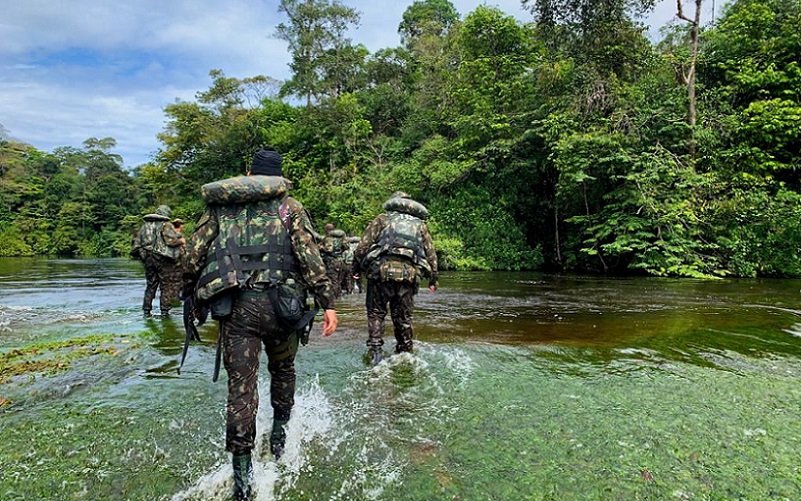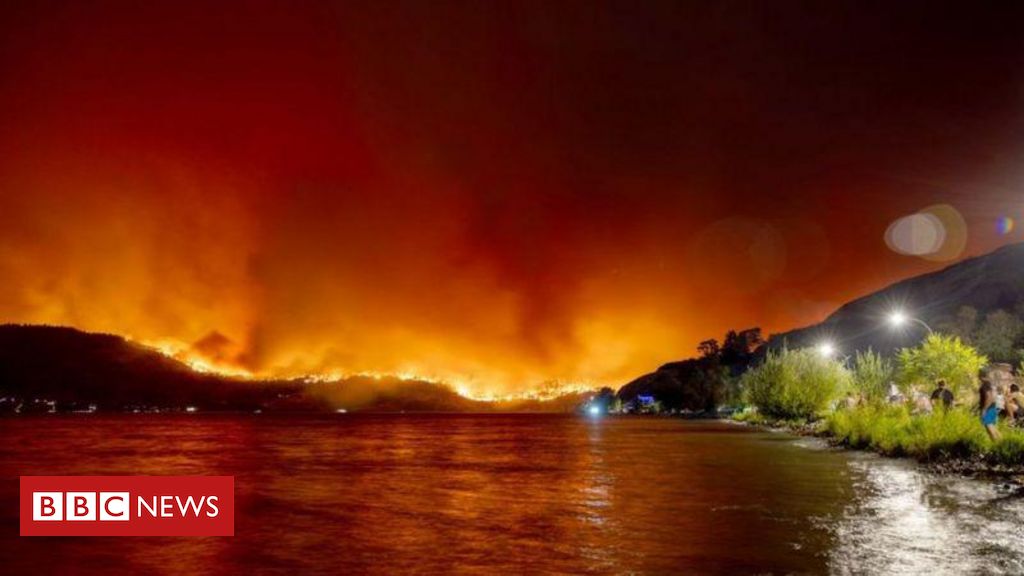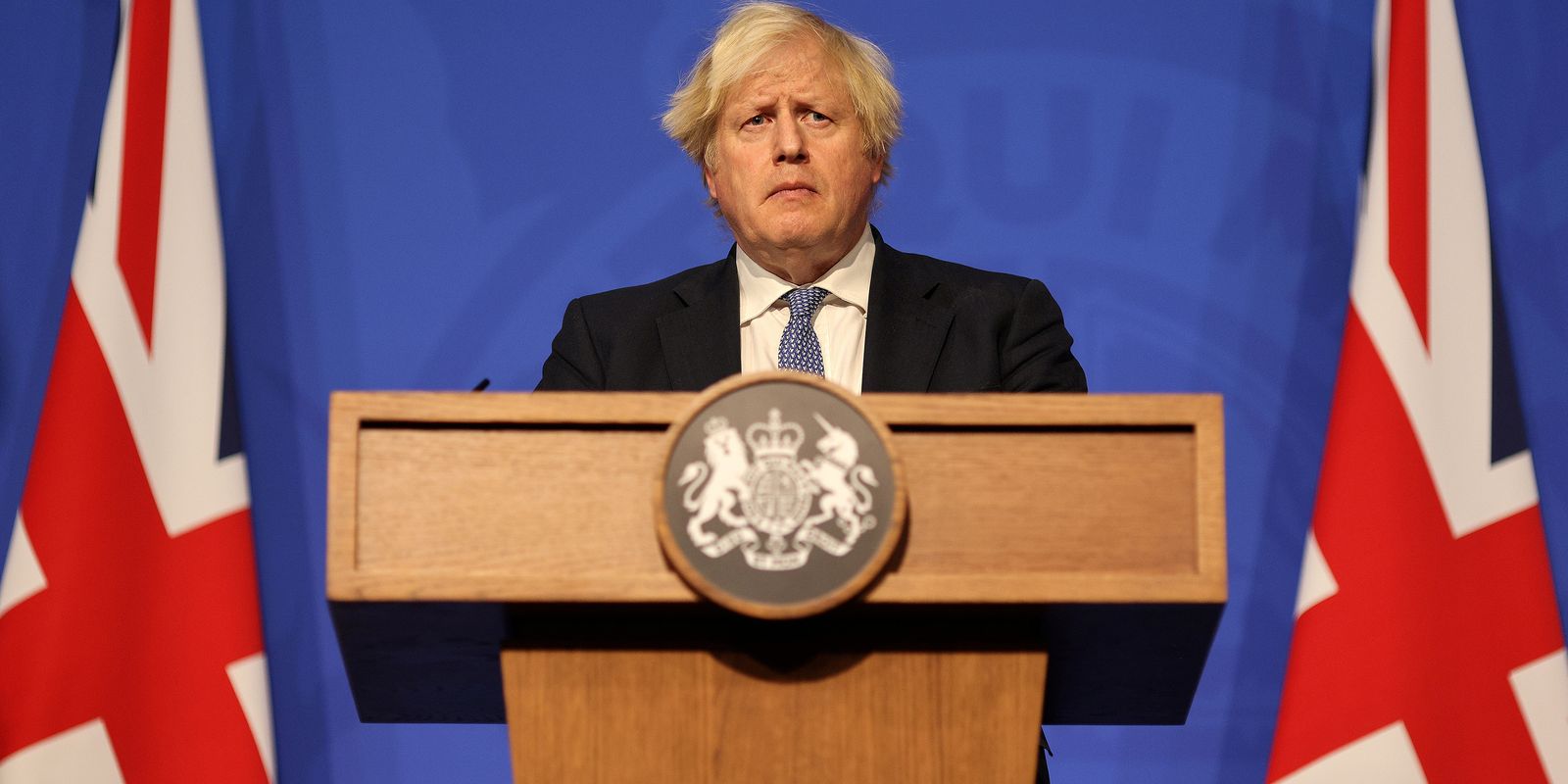Credit, EPA
The Kamloops school in 1937: the site could accommodate up to 500 children
From 1863 to 1998, more than 150,000 Aboriginal children were separated from their families and placed in residential schools across Canada.
These public schools, mostly run by the Catholic Church, were part of the policy of cultural assimilation of indigenous children.
The miners could not speak their language or practice the culture of their people. Many were mistreated and suffered abuse.
“Cultural Genocide”
Christian churches have been instrumental in the establishment and operation of these schools.
The Catholic Church, in particular, was responsible for operating up to 70% of the 130 boarding schools, according to the Residential School Survivor Society.
Credit, Getty Images
Children at a boarding school for native miners in Canada in 1950
The children had to give up their mother tongue, speak English or French and convert to Christianity.
Joseph Maud was one of these children. In 1966, at the age of five, he entered Pine Creek Residential School in Manitoba, Canada.
Students had to speak English or French, but Maud only spoke the language of her people, Ojibwa.
If the students spoke their own language, their ears were pulled and their mouths washed out with soap, Maud told the BBC in 2015, when a Truth and Reconciliation Commission report on the matter was published.
“But the biggest pain was being separated from my parents, my cousins and my aunts and uncles,” Maud told the BBC.
The report describes the government’s policy as “cultural genocide”.
“These measures were part of a cohesive policy to eliminate Indigenous peoples as a distinct people and assimilate them into the Canadian mainstream against their will,” the document said.
“The Canadian government pursued this policy of cultural genocide because it wanted to rid itself of its legal and financial obligations to Indigenous peoples and take control of their lands and resources,” the report noted.
Credit, COLE BURSTON
Kamloops school survivor Evelyn Camille poses next to a memorial to the victims of Kamloops
Bad conditions and abuse
The report details serious failures in the care and safety of children, with the support of the Church and the government.
Students were often housed in poorly constructed, poorly heated and unsanitary buildings, according to the report. Many did not have access to a qualified doctor to accompany them.
The work of the Truth and Reconciliation Commission revealed that around 6,000 children died while in boarding schools. Their bodies rarely returned to the family. Many were buried in unmarked graves.
The Missing Children Project documents the deaths and burial sites of many of these minors. In a recent survey, the initiative revealed that it had already identified the places where more than 4,100 children were buried.
Many of those who survived had to live with memories of emotional, physical and even sexual abuse.
Maud told the BBC in 2015 that he had to kneel on the concrete floor of the chapel because the nuns said “it was the only way for God to hear him”.
“I was crying as I got down on my knees and wondering: when is this going to end? Someone help me,” he said.
He remembered that he had wet the bed once. A nun who was tending to her room then rubbed her face against her own urine.
“It was very degrading and humiliating. Because I was in a dorm with 40 other kids,” he said.
In 2008, the Canadian government officially apologized for its past actions.
Credit, Reuters
Some Canadians wear children’s shoes in remembrance of children who died at school in the past
Discovery at Kamloops School
The Kamloops school operated between 1890 and 1969, in the city of the same name, in the province of British Columbia, in the far west of Canada. It was the largest system in this segment, known as the Native School Residence System.
Under Catholic administration, it hosted 500 students during its longest period of occupation, in the 1950s.
At the end of last month, a mass grave was discovered in which lie the remains of at least 215 indigenous children. The incident sparked outrage across the country.
The discovery was made through an initiative by the area’s Tk’emlups te Secwepemc Indigenous Nation, which said it used ground-penetrating radar during a survey of the site.
Credit, Reuters
There were approximately 130 boarding schools for Aboriginal children in Canada. Pictured is the Kamloops facade
Museum experts and coroners help establish the causes and times of the children’s deaths, which are not yet known.
The final report on the discovery is expected to be released in mid-June and preliminary findings may be revised. Indigenous leaders and advocates expect that number to rise from 215.
To date, there is no complete picture of how many children died, how they died, or where they are buried. Initiatives such as the Tk’emlúps te Secwépemc Nation are helping to piece together some of this history.
Canadian Prime Minister Justin Trudeau called the situation a “painful reminder” of a “shameful chapter in our country’s history”.
Trudeau called on the Catholic Church to “take responsibility” for its role in residential schools.
The government took over the Kamloops school in 1969 and used it as a residence for local students until 1978 when it closed.
“We need to know the truth before we can talk about justice, healing and reconciliation,” Trudeau said.
Have you watched our new videos on Youtube? Subscribe to our channel!
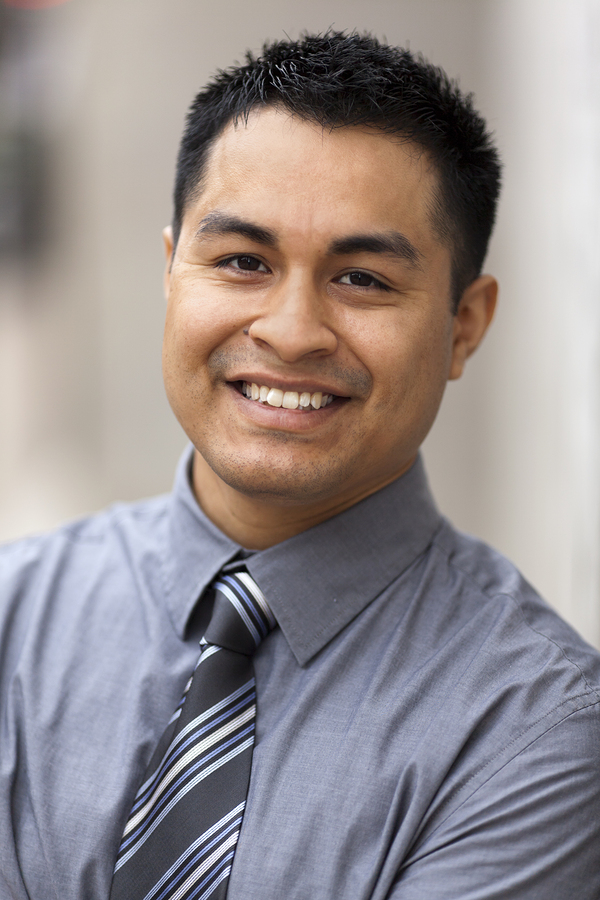
“Freelance communicator. Hardcore web practitioner. Entrepreneur. Total student. Beer ninja.”

